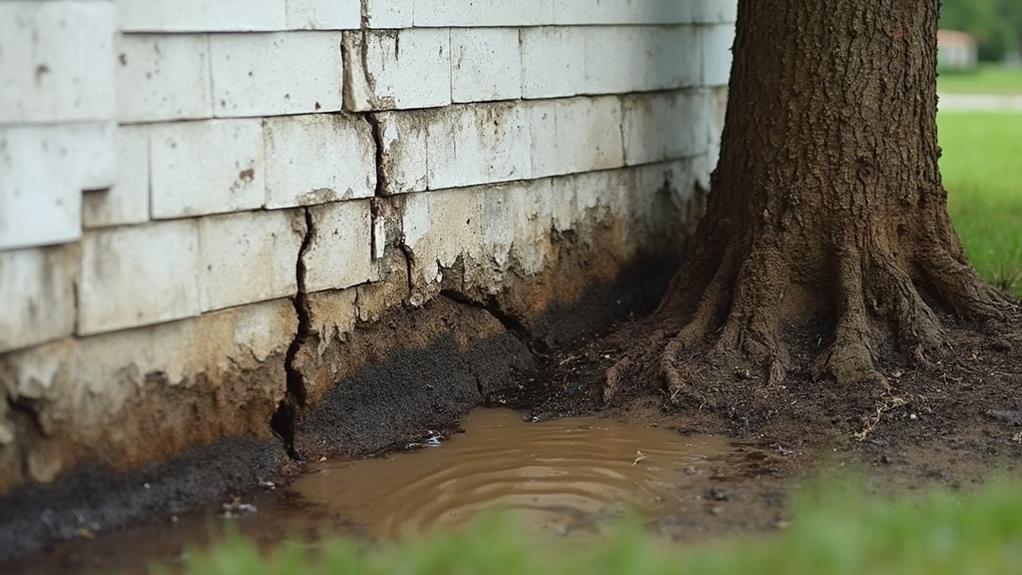Storms can cause hidden foundation damage that's not immediately visible. Soil erosion and settlement, hydrostatic pressure buildup, and expanding or contracting soil can undermine structural integrity. These issues may lead to cracks in foundation walls, shifting floors, and compromised support over time. Foundation upheaval and deteriorating concrete or masonry are additional concerns. Long-term effects of repeated storms include gradual soil erosion, increased water intrusion, and weakening of materials. While some signs may eventually become apparent, many problems remain concealed until significant damage occurs. Understanding these hidden threats is crucial for maintaining your home's foundation and preventing costly repairs.
Soil Erosion and Settlement
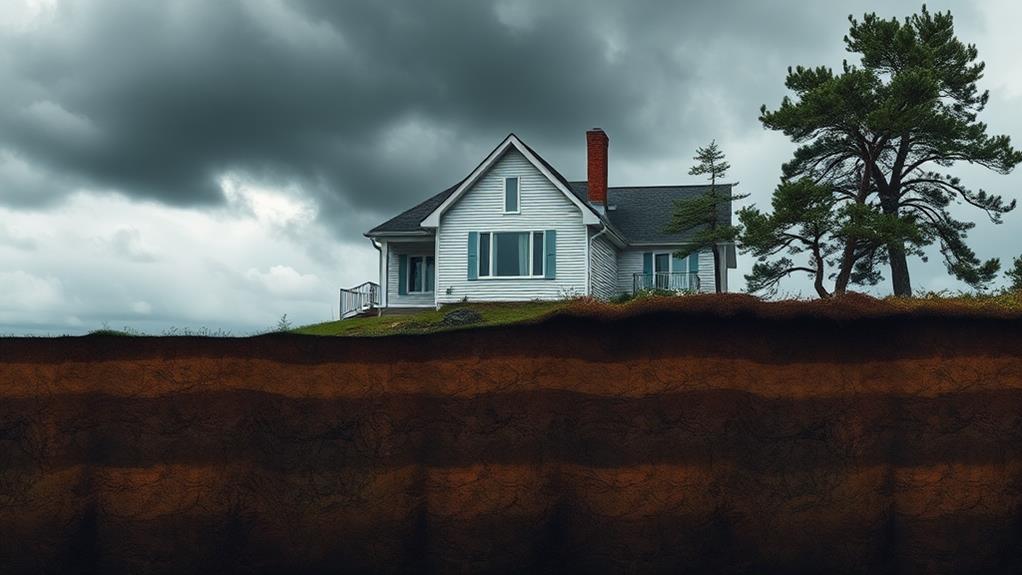
Soil erosion and settlement pose significant threats to a home's foundation, often occurring unnoticed until substantial damage has already taken place. These processes can be accelerated by severe storms, which introduce excessive water into the soil surrounding a structure. As water accumulates, it can wash away soil particles, creating voids beneath the foundation. This erosion weakens the soil's ability to support the structure, leading to uneven settling and potential structural instability.
Heavy rains and flooding can also cause soil to become oversaturated, increasing its weight and placing additional pressure on foundation walls. This pressure may result in cracks, bowing, or shifting of the foundation. In areas with expansive clay soils, the problem is exacerbated as these soils swell when wet and shrink when dry, subjecting the foundation to constant stress.
To mitigate these risks, homeowners should ensure proper drainage around their property, maintain gutters and downspouts, and grade the land away from the foundation. Regular inspections by qualified professionals can help detect early signs of soil erosion and settlement, allowing for timely interventions to prevent more severe foundation damage.
Hydrostatic Pressure Buildup
One of the most insidious threats to a home's foundation is hydrostatic pressure buildup. This phenomenon occurs when water accumulates in the soil surrounding a foundation, exerting significant force against basement walls and floors. As the water table rises during heavy rainfall or flooding, the pressure increases exponentially, potentially leading to severe structural damage.
The primary danger of hydrostatic pressure lies in its ability to exploit existing weaknesses in the foundation. Even minor cracks or imperfections can become entry points for water infiltration. As the pressure mounts, these small openings may widen, allowing more water to seep in and further compromising the foundation's integrity.
To mitigate the risks associated with hydrostatic pressure, homeowners should implement proper drainage systems, including functional gutters, downspouts, and grading that directs water away from the foundation. Installing a sump pump can also help manage excess water accumulation. Additionally, applying waterproof sealants to foundation walls and floors can provide an extra layer of protection against water intrusion. Regular inspections by qualified professionals can detect early signs of hydrostatic pressure damage, allowing for timely interventions to prevent more extensive and costly repairs.
Expanding and Contracting Soil
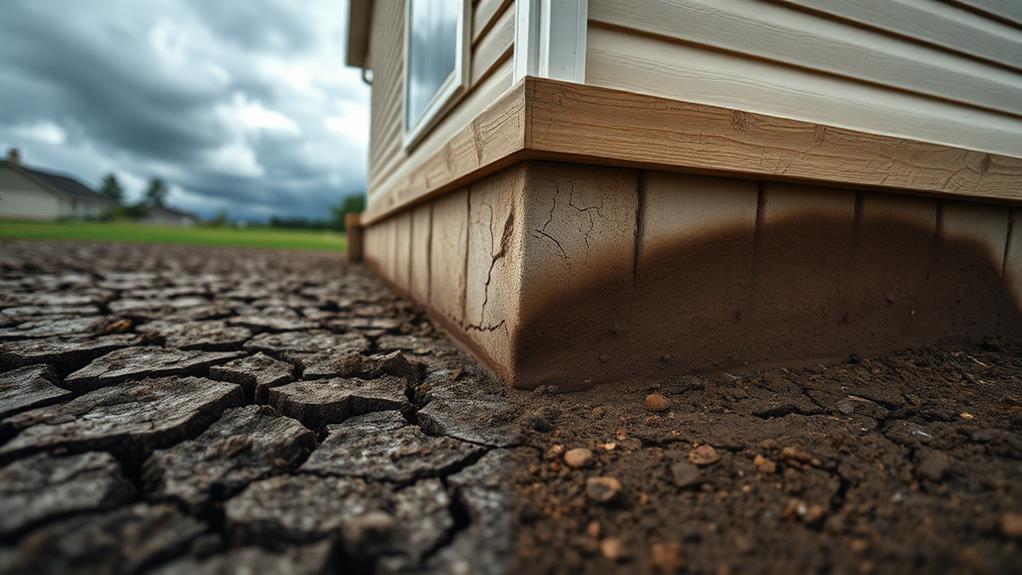
Another significant threat to foundation stability comes from expanding and contracting soil. This phenomenon occurs when soil containing clay absorbs water during wet periods and swells, then shrinks as it dries out. The cyclical nature of this process can exert tremendous pressure on foundation walls and footings, leading to cracks, shifts, and structural instability over time.
During heavy storms or prolonged periods of rainfall, the soil surrounding a home's foundation becomes saturated. As clay particles absorb water, they expand, pushing against foundation walls with considerable force. Conversely, during dry spells or drought conditions, the soil contracts and pulls away from the foundation, potentially creating voids or allowing settling to occur.
This constant expansion and contraction can cause several issues, including:
- Vertical or diagonal cracks in foundation walls
- Bowing or leaning of foundation walls
- Uneven floors or gaps between floors and walls
- Stuck doors or windows
- Separation of exterior brickwork or siding from the house
To mitigate these risks, proper drainage systems, moisture control measures, and regular foundation inspections are crucial. In some cases, soil stabilization techniques or underpinning may be necessary to prevent further damage and ensure long-term structural integrity.
Cracks in Foundation Walls
Vigilance is key when it comes to identifying foundation damage, and cracks in foundation walls are often the first visible signs of trouble. These cracks can range from hairline fractures to wide, gaping fissures, each indicating different levels of structural concern. Horizontal cracks are particularly worrisome, as they may suggest serious lateral pressure on the foundation walls, potentially leading to bowing or collapse.
Vertical cracks, while generally less severe, should not be ignored. They can result from settling or minor shifts in the foundation and may allow water intrusion if left unaddressed. Diagonal cracks often indicate uneven settling and can be a sign of significant structural issues. Stair-step cracks in brick or concrete block walls are another red flag, typically signaling foundation movement or soil problems.
It's crucial to monitor these cracks over time, noting any changes in width, length, or direction. Professional evaluation is recommended for cracks wider than 1/4 inch or those exhibiting ongoing expansion. Prompt attention to foundation cracks can prevent more extensive damage and costly repairs, preserving the integrity and safety of the structure.
Shifting and Uneven Floors
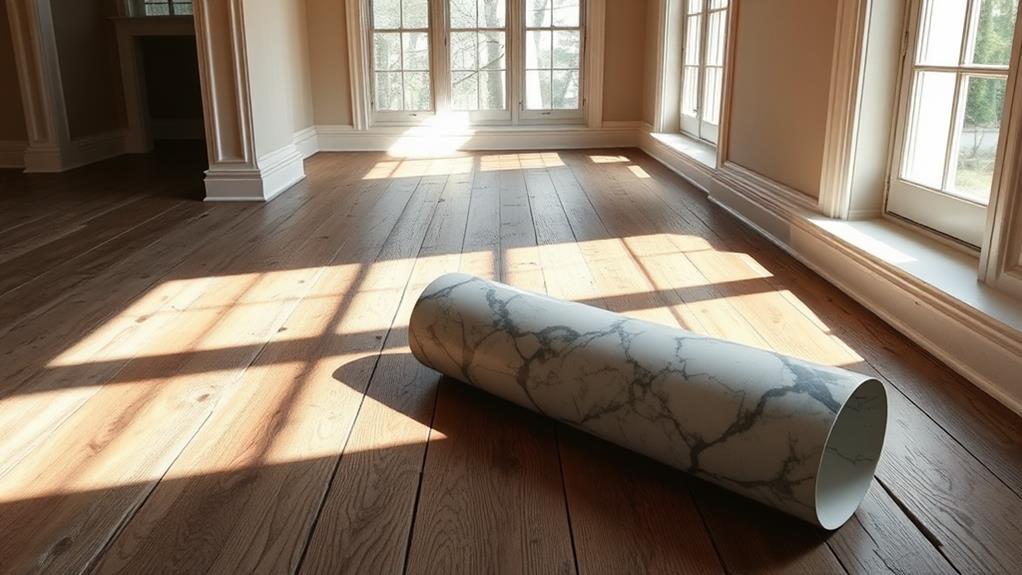
While foundation cracks may be visible indicators of structural issues, shifting and uneven floors can reveal hidden foundation problems that aren't immediately apparent. These symptoms often manifest gradually, making them easy to overlook until the damage becomes severe.
Shifting floors occur when the foundation settles unevenly, causing parts of the house to sink or tilt. This can result in sloping floors, gaps between the floor and baseboards, or doors that no longer close properly.
Uneven floors may also indicate underlying foundation issues. You might notice a noticeable dip or bounce when walking across certain areas, or furniture that wobbles despite appearing level. These irregularities can stem from various factors, including soil settlement, water damage, or inadequate support structures. In some cases, the unevenness may be due to rotting floor joists or subfloor, which can be exacerbated by moisture infiltration following a storm.
To identify shifting or uneven floors, conduct a thorough inspection of your home. Use a level to check for slopes, and pay attention to any changes in floor height between rooms. If you suspect foundation issues, consult a professional structural engineer for a comprehensive assessment and appropriate remediation strategies.
Water Seepage and Moisture Damage
Despite its often subtle nature, water seepage and moisture damage can be among the most destructive forces affecting a home's foundation. Water infiltration can occur through cracks, poorly sealed joints, or porous concrete, leading to a range of issues that compromise structural integrity. As moisture accumulates, it can erode soil beneath the foundation, causing settling and shifts in the structure above.
Prolonged exposure to moisture can also lead to the deterioration of concrete and reinforcing steel within the foundation. This weakening process is often accelerated by freeze-thaw cycles in colder climates, where water expands as it freezes, widening existing cracks and creating new ones. Additionally, persistent dampness creates an ideal environment for mold growth, which can further degrade building materials and pose health risks to occupants.
Signs of water seepage may include efflorescence (white, powdery deposits on concrete surfaces), musty odors, or visible water stains on walls and floors. To prevent such damage, proper drainage systems, waterproofing measures, and regular maintenance are crucial. Homeowners should be vigilant in identifying and addressing potential water issues promptly to avoid costly repairs and ensure the longevity of their foundation.
Compromised Structural Support
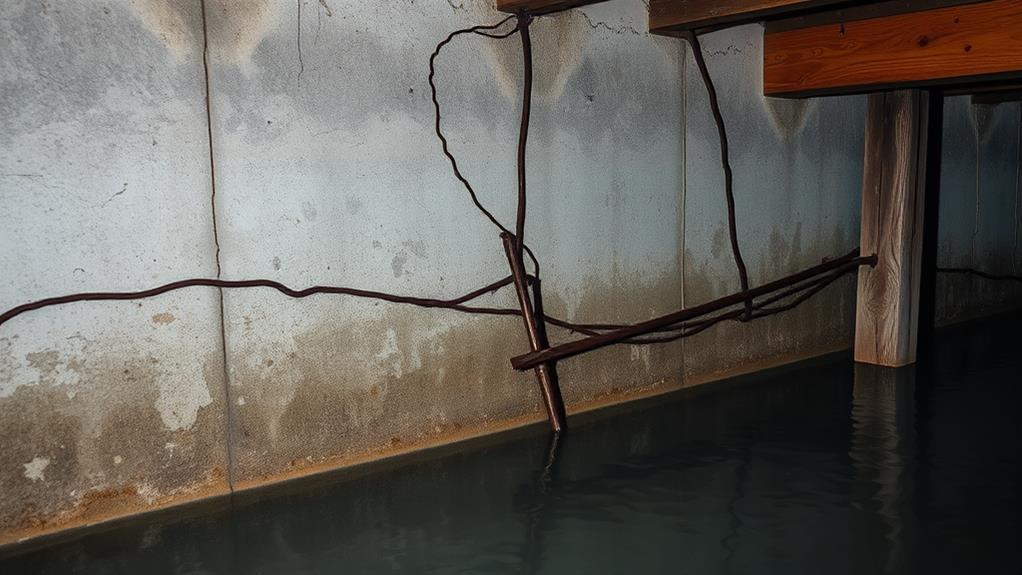
How can a homeowner recognize the signs of compromised structural support in their foundation? Subtle indicators may include uneven floors, doors and windows that stick or won't close properly, and cracks in walls or ceilings.
More severe signs include visible gaps between walls and floors, bowing or leaning walls, and a chimney that tilts away from the house. These symptoms often develop gradually, making them easy to overlook or dismiss.
Compromised structural support can result from various factors, including soil erosion, inadequate drainage, or poor initial construction. Storms can exacerbate these issues by causing rapid soil saturation, leading to increased hydrostatic pressure on foundation walls. This pressure can cause walls to bow or crack, potentially compromising the entire structure's integrity.
To identify hidden foundation damage, homeowners should regularly inspect their basements and crawl spaces, paying close attention to any changes in wall alignment or new cracks. It's crucial to monitor the property's exterior for signs of settling or shifting. Professional foundation assessments can provide a comprehensive evaluation of the structure's condition and identify potential risks before they escalate into major problems.
Foundation Upheaval
Foundation upheaval presents a serious threat to the stability and safety of a home. This phenomenon occurs when expansive soil beneath the foundation absorbs excessive moisture, causing it to swell and exert upward pressure on the structure. Storms and prolonged periods of heavy rainfall can significantly contribute to this problem, as water saturates the ground and alters its composition.
The signs of foundation upheaval may not be immediately apparent, making it a particularly insidious form of damage. Homeowners should be vigilant for subtle indicators such as doors and windows that suddenly become difficult to open or close, cracks appearing in walls or ceilings, and uneven or sloping floors. In severe cases, the upheaval can cause visible distortions in the foundation itself or create gaps between the foundation and the surrounding soil.
Addressing foundation upheaval requires prompt action to prevent further damage. Solutions may include improving drainage around the property, installing foundation piers or helical anchors, or implementing moisture barriers. Regular inspections by qualified professionals can help detect early signs of upheaval and mitigate potential structural issues before they escalate into costly repairs or compromise the integrity of the entire building.
Deteriorating Concrete and Masonry
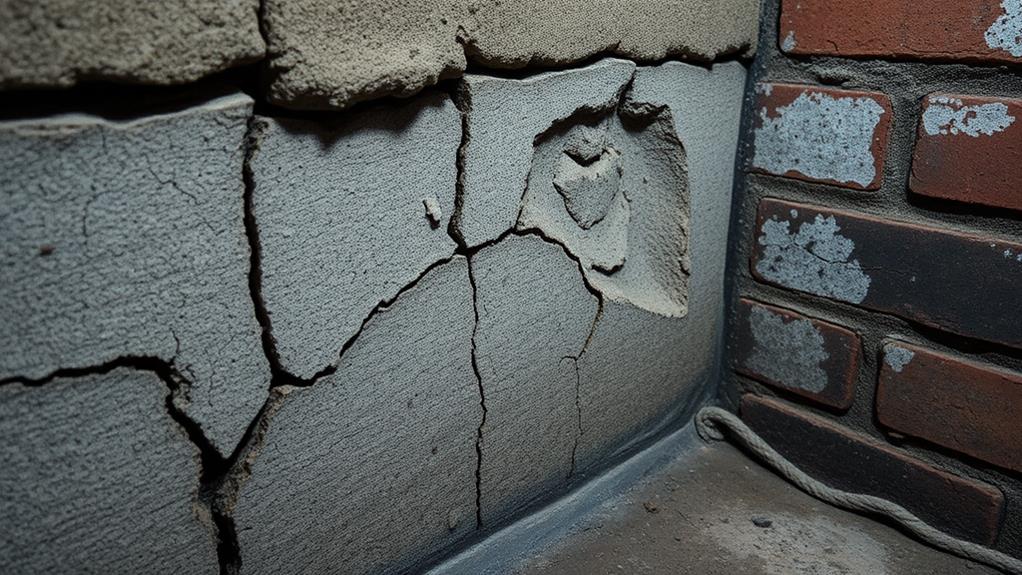
While often overlooked, deteriorating concrete and masonry can significantly compromise a foundation's structural integrity. Storm damage can accelerate this deterioration through various mechanisms.
Repeated exposure to water, especially during heavy rains or floods, can lead to the erosion of concrete and mortar. This erosion weakens the overall structure and creates entry points for further water infiltration.
Freeze-thaw cycles, common in colder climates, can cause significant damage to concrete and masonry. As water seeps into small cracks and freezes, it expands, widening the cracks and leading to more severe structural issues over time. Additionally, storms can introduce corrosive substances, such as salt from seawater or de-icing agents, which can react with the concrete and accelerate its breakdown.
The presence of moisture can also foster the growth of mold and algae, which not only pose health risks but can also contribute to the degradation of concrete and masonry surfaces. Regular inspections are crucial to identify early signs of deterioration, such as spalling, efflorescence, or visible cracks. Prompt repairs and waterproofing measures can help prevent further damage and maintain the foundation's integrity.
Long-Term Effects of Repeated Storms
Experiencing repeated storms can have cumulative and devastating effects on a home's foundation over time. The constant barrage of heavy rainfall, wind, and potential flooding slowly erodes the soil around and beneath the foundation, leading to instability and structural issues. This erosion process can create voids under the foundation, causing uneven settling and potential cracking.
Moreover, the repeated cycles of saturation and drying can lead to soil expansion and contraction, placing additional stress on the foundation walls. This stress may result in bowing or cracking, compromising the structural integrity of the entire home. The increased hydrostatic pressure from saturated soil can also force water through small cracks or pores in the foundation, leading to moisture intrusion and potential mold growth.
Long-term exposure to these conditions can weaken concrete and masonry materials, accelerating their deterioration. Additionally, repeated storms may cause gradual shifts in the water table, affecting the soil's load-bearing capacity and potentially leading to foundation settlement. Regular inspections and proactive maintenance are crucial to identify and address these hidden long-term effects before they escalate into severe structural problems.
Frequently Asked Questions
How Often Should I Have My Foundation Professionally Inspected?
Professional foundation inspections should be conducted every 3-5 years for most homes. However, factors like soil type, climate, and property age may necessitate more frequent checks. After severe weather events, it's advisable to schedule an additional inspection promptly.
Can Foundation Damage Affect My Home's Resale Value?
Yes, foundation damage can significantly impact your home's resale value. It raises concerns about structural integrity, potentially leading to costly repairs. Buyers may be deterred or negotiate lower prices when faced with foundation issues during property inspections.
Are There Preventive Measures to Protect Foundations From Storm Damage?
As solid as a rock, preventive measures can safeguard foundations from storm damage. Implement proper drainage systems, maintain gutters, seal foundation cracks, grade soil away from the house, and install sump pumps to protect against water infiltration and erosion.
Does Homeowners Insurance Typically Cover Storm-Related Foundation Damage?
Homeowners insurance typically covers storm-related foundation damage caused by specific perils like wind or falling trees. However, coverage varies by policy and may exclude damage from floods or earth movement. Always review your policy for precise details.
What Are the Signs of Hidden Foundation Damage in the Home's Interior?
Signs of hidden foundation damage in a home's interior include cracks in walls or ceilings, uneven floors, sticking doors or windows, gaps around window frames or doors, and visible separation between walls and floors or ceilings.
Conclusion
Hidden foundation damage from storms can have severe long-term consequences for buildings. Regular inspections and prompt repairs are crucial to prevent escalating structural issues. Interestingly, according to the Federal Emergency Management Agency (FEMA), up to 60% of homes in the United States are at risk of foundation damage due to soil-related problems exacerbated by extreme weather events. Addressing these hidden damages promptly can significantly reduce repair costs and maintain the integrity and safety of structures over time.
